If you love fresh flavors in your cooking and want to bring nature closer to home, starting a balcony herb garden is one of the easiest and most rewarding projects you can try. Not only does it save you money on store-bought herbs, but it also adds greenery, fragrance, and charm to your space. Whether you live in a small apartment or a high-rise, your balcony can be transformed into a lush mini garden with minimal effort.
In this guide, you’ll learn step-by-step how to create your own balcony herb garden — from choosing the right herbs to maintaining them for a continuous supply.
Why Start a Balcony Herb Garden?
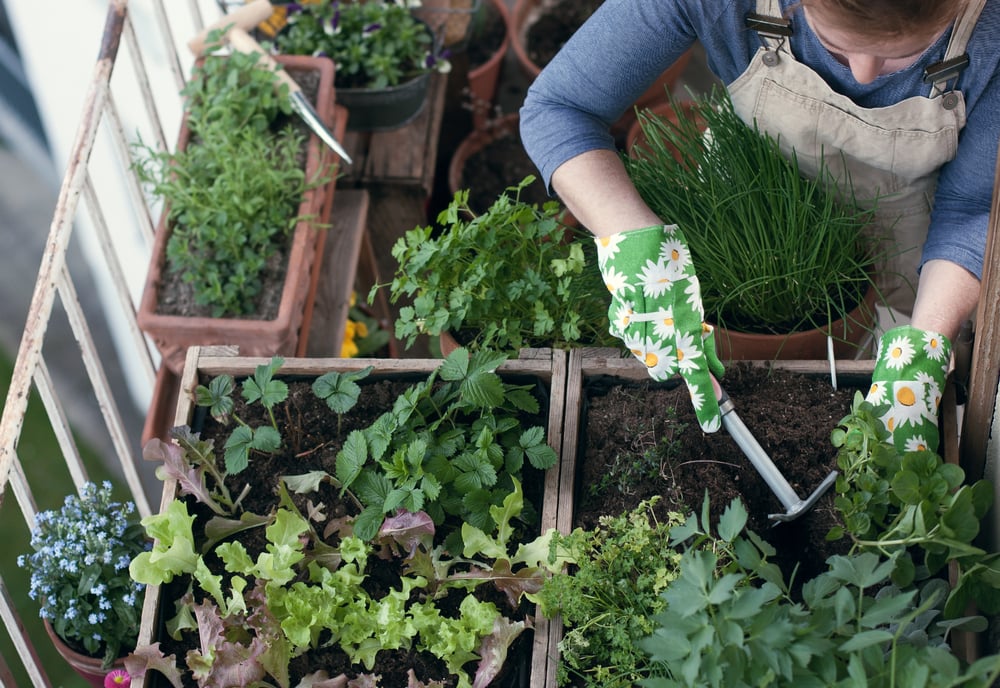
Before we dive into the how-to, let’s quickly explore why balcony herb gardening is worth your time.
- Fresh, Organic Produce: No pesticides, no preservatives — just pure, fresh herbs at your fingertips.
- Space-Friendly: Even the smallest balcony can host a thriving herb collection.
- Cost-Effective: A single packet of seeds or a small starter plant can produce herbs for months.
- Aesthetic Appeal: Herbs bring greenery, texture, and sometimes even flowers to your balcony.
- Therapeutic Hobby: Gardening is known to reduce stress and improve mood.
Step 1: Choose the Right Herbs
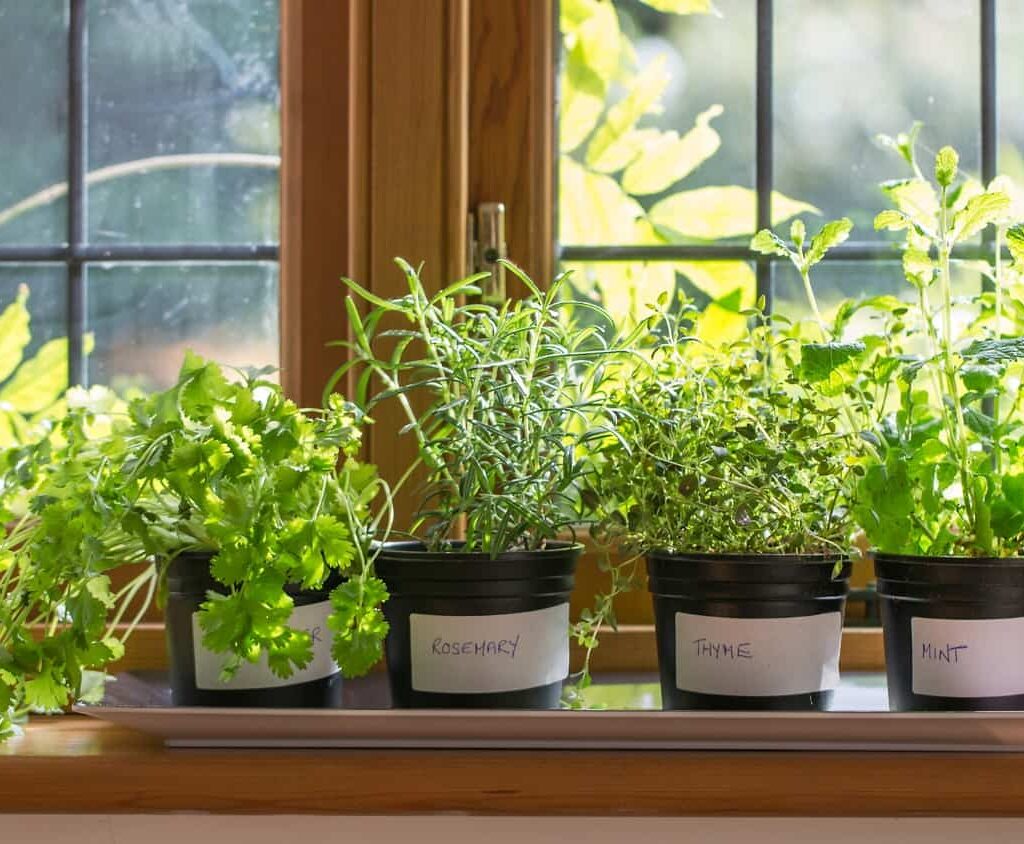
Not all herbs grow equally well in balcony conditions, so choose varieties that match your available light and climate.
Best Herbs for Beginners
- Basil – Loves sunlight and grows quickly, perfect for salads and pasta.
- Mint – Hardy and aromatic, ideal for teas and cool drinks.
- Parsley – A slow grower but very rewarding; great for garnishing dishes.
- Cilantro (Coriander) – Best for cooler seasons; adds freshness to many recipes.
- Chives – Mild onion flavor, grows well in small pots.
- Rosemary – A woody perennial that thrives in sunny conditions.
- Thyme – Low maintenance, drought-tolerant, and perfect for seasoning meats.
Tip: Start with 3–5 easy herbs first; you can expand your collection later.
Step 2: Assess Your Balcony Conditions
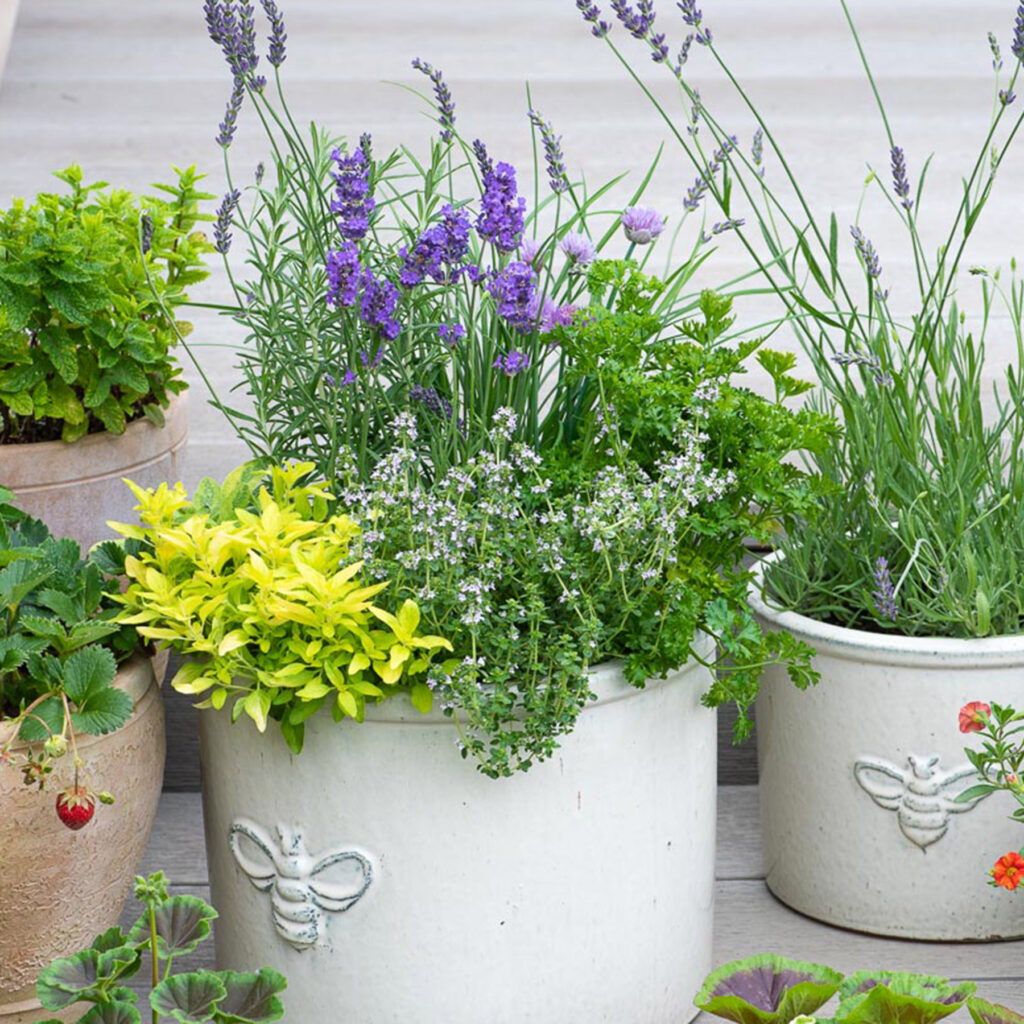
Your balcony’s location will determine which herbs will thrive.
- Sunlight: Most herbs prefer 4–6 hours of sunlight per day. South- or west-facing balconies are ideal.
- Wind: High balconies can be windy, which can dry out plants quickly. Use railing screens or position plants near walls for protection.
- Shade: If your balcony is shaded, opt for herbs like mint, parsley, and chives, which can handle lower light.
Pro Tip: Use a sunlight tracker app to monitor the light levels before deciding on herb placement.
Step 3: Select Containers and Pots
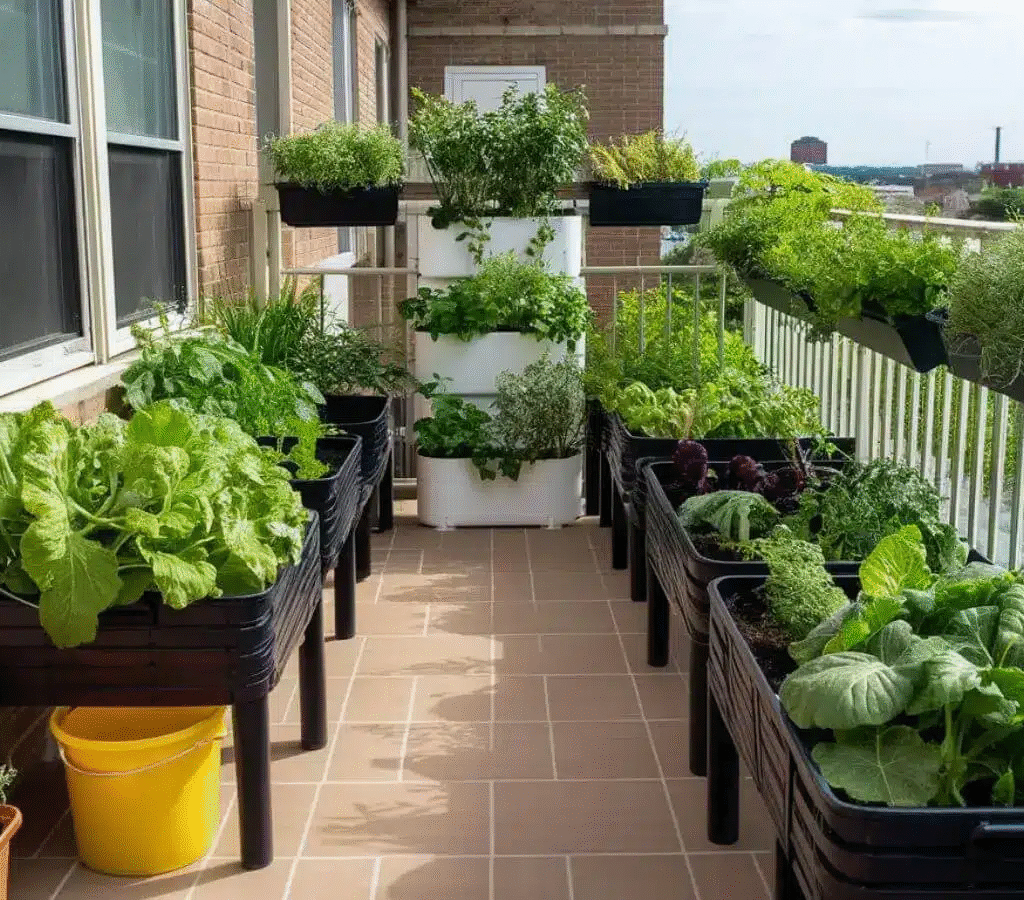
Container gardening is perfect for balconies, but choosing the right pots is key.
- Size: Herbs generally do well in pots that are 6–12 inches deep.
- Material:
- Clay pots – Breathable but dry out faster.
- Plastic pots – Lightweight and retain moisture longer.
- Metal containers – Stylish but can overheat in direct sunlight.
- Drainage: Always ensure pots have drainage holes to prevent root rot.
Creative Ideas: Use repurposed items like old teapots, tin cans, or wooden crates for a rustic look — just make sure they have proper drainage.
Step 4: Choose the Right Soil
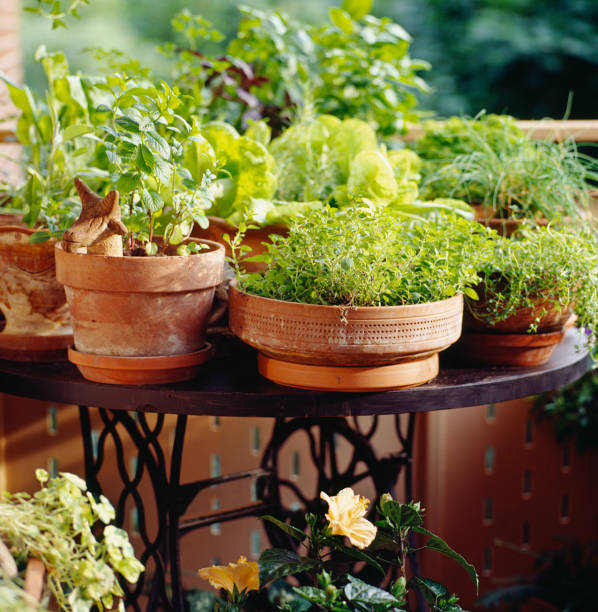
Herbs thrive in well-draining soil that retains enough moisture for their roots.
- Use lightweight potting mix instead of garden soil, which can be too heavy for containers.
- Mix in perlite or coarse sand to improve drainage.
- Add compost for nutrient richness.
Optional: Use organic fertilizers every 3–4 weeks to boost growth.
Step 5: Planting Your Herbs
You can start herbs from seeds or buy young plants from a nursery.
- From Seeds: Cheaper, but takes longer to mature. Follow packet instructions for depth and spacing.
- From Seedlings: Faster results; simply transfer into prepared pots.
- Spacing: Avoid overcrowding — most herbs need room for air circulation to prevent fungal issues.
Planting Tip: Water immediately after planting to help roots settle.
Step 6: Watering and Maintenance
Watering habits can make or break your herb garden.
- Frequency: Most herbs prefer slightly moist soil but not soggy.
- Morning Watering: Reduces evaporation and prevents fungal diseases.
- Check Soil: Stick your finger into the soil — if the top inch feels dry, it’s time to water.
Maintenance Checklist:
- Pruning: Regularly trim leaves to encourage bushier growth.
- Deadheading: Remove flower buds from herbs like basil to prolong leaf production.
- Repotting: Refresh soil and upsize containers if roots become cramped.
Step 7: Protecting Your Balcony Herb Garden
Balcony gardens can face unique challenges such as pests, weather changes, and space limitations.
- Pests: Use neem oil spray or soapy water to deter aphids and mites.
- Weather: Move pots indoors during storms or extreme heat.
- Support: Use small trellises for climbing herbs like rosemary or oregano.
Step 8: Harvesting Your Herbs
The joy of a balcony herb garden comes when you can finally snip fresh leaves for your cooking.
- Timing: Harvest in the morning after dew has dried but before the sun is at its peak.
- Method: Use clean scissors to snip stems above a leaf node (where leaves join the stem).
- Frequency: The more you harvest, the more the plant produces — but avoid taking more than one-third at a time.
Step 9: Using Your Fresh Herbs
Here are a few delicious ways to enjoy your harvest:
- Add basil to pizzas, pasta, or pesto.
- Brew mint into fresh herbal tea.
- Sprinkle chopped parsley on soups or grilled meats.
- Use rosemary sprigs to flavor roasted vegetables.
- Mix chives into omelets or cream cheese.
Common Mistakes to Avoid
- Overwatering: Leads to root rot.
- Wrong Pot Size: Too small restricts growth; too large may retain too much water.
- Ignoring Sunlight Needs: Some herbs won’t survive without enough light.
- Planting Too Many at Once: Start small to avoid being overwhelmed.
- Not Pruning: Leads to leggy, less flavorful plants.
Seasonal Care Tips
- Summer: Water more often, provide shade during heatwaves.
- Winter: Move herbs indoors or cover them with frost cloth if temperatures drop.
- Monsoon (Rainy Season): Ensure pots have good drainage to avoid waterlogging.
Conclusion
Starting a balcony herb garden is not only simple but also an enriching experience. With just a few pots, some sunlight, and a little care, you can enjoy fresh, organic herbs right outside your door. The key is to start small, understand your balcony’s conditions, and give your plants consistent love and attention. Over time, you’ll develop a green thumb and perhaps even expand into vegetables or flowers.

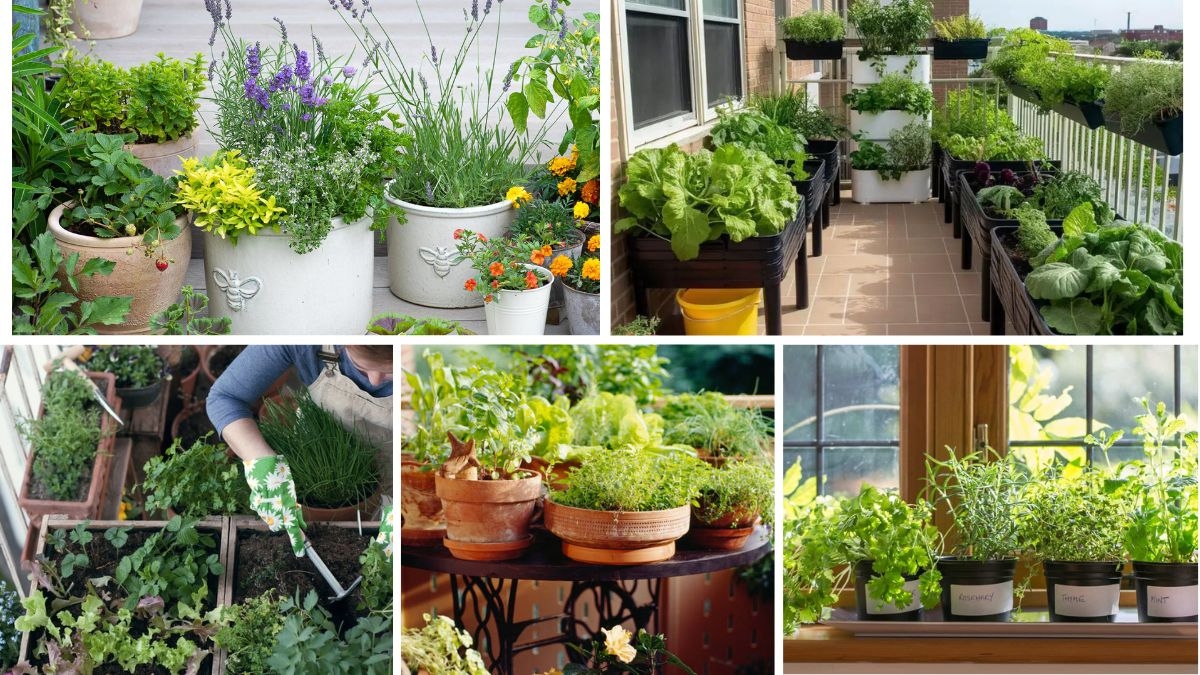





Leave A Comment